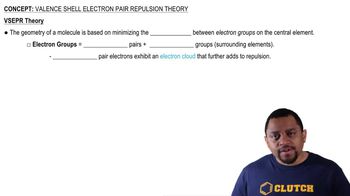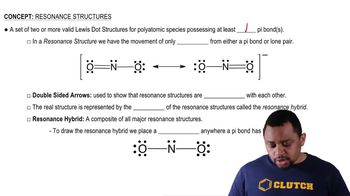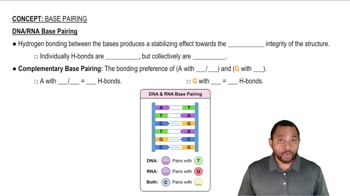Write an equation for the acid-base equilibrium of:
a.Pyrrolidine and water
Label each species in the equilibrium as either an acid or a base.

 Verified step by step guidance
Verified step by step guidance Verified video answer for a similar problem:
Verified video answer for a similar problem:



 1:32m
1:32mMaster Acid-Base Reaction Concept 1 with a bite sized video explanation from Jules
Start learning